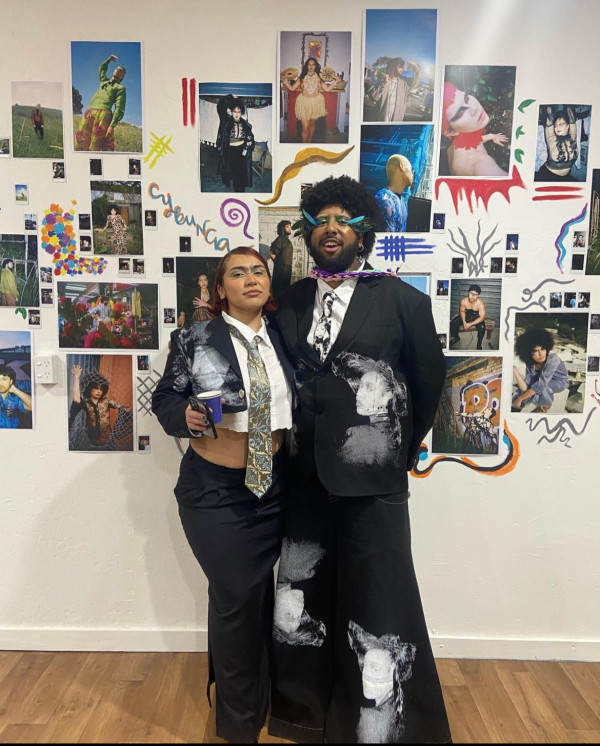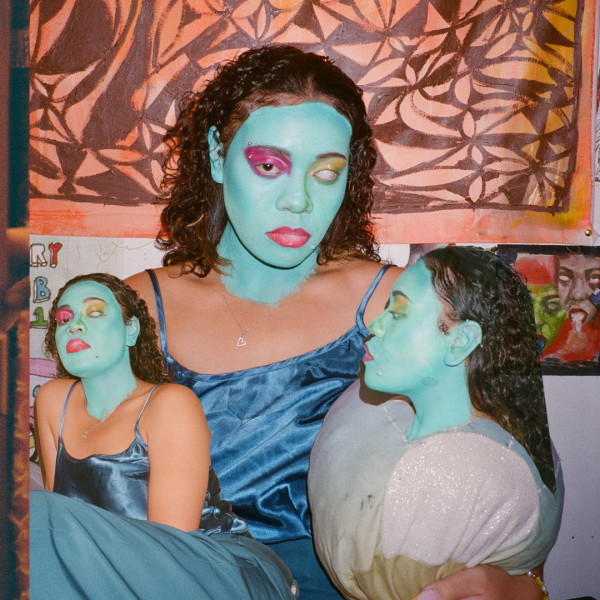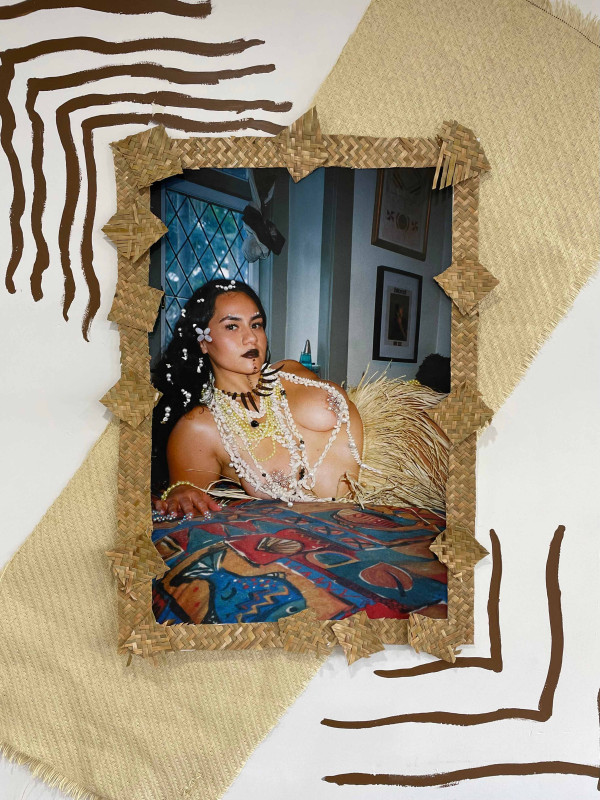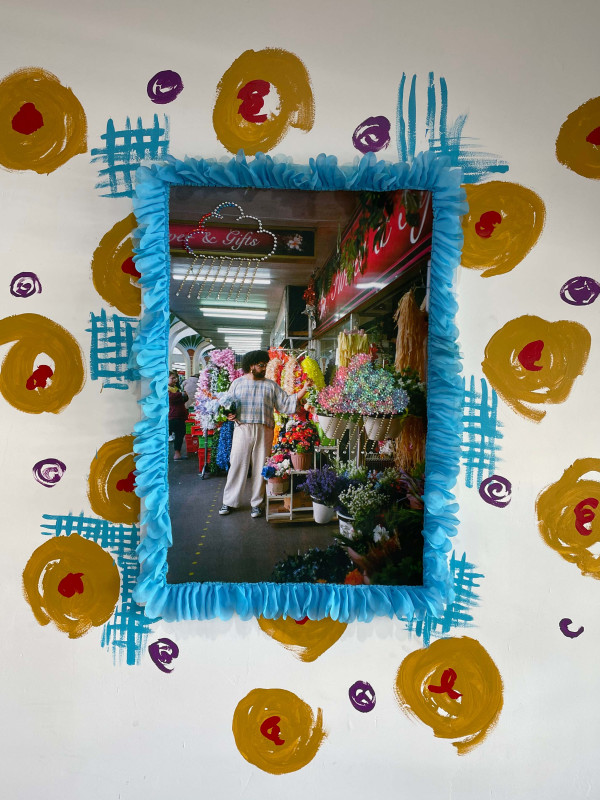In South Auckland, there’s a creative, Pacific arts scene you may not know about.
It’s rooted in the intersections that make these artists who they are: their queerness, being Tagata Moana and having ties to South Auckland.
These artists are shedding light on their own stories through art - while also using that as a way to understand themselves and the world around them.
For Peter Wing, the creative scene in South Auckland has given them a sense of belonging and further instilled the power of community, which is filled with like-minded artists.
“A lot of the time, I’m not understood,” the 26-year-old Ni-Vanuatu multidisciplinary artist says.
“I feel like people give some form of opinion of how I am, without knowing who I actually am, without taking the time to ask.”
But with the South Auckland creative scene, Peter says they feel more safe there than they do anywhere else, “which shows the open-mindedness that people have and just this level of understanding that we think the community don’t have, but they do”.
This is reflected in Peter’s work.
For their first solo art exhibition called Outpour and Outsource, Peter teamed up with their best friend and frequent collaborator, makeup artist Ashley Helsham-Southgate to bring together a bunch of established artists in a fantastical visual display of what Coco Solid (owner of Wheke Fortress and author of How To Loiter in a Turf War) describes as “southside maximalist beauty”.

Peter and Ashley wearing Nineteen99 at their Outpour and Outsource exhibition at Wheke Fortress, Onehunga. Photo: Supplied by Katharine Atafu-Mayo.
The artists, who are also Peter’s friends, were styled and decorated through a specifically queer lens, with bright and colourful clothes, adorned with loud, stunning makeup and embellishments.
Peter says the theme was about agency - having self-determination and a sense of control over one’s own life - and showcased the nuance of South Aucklanders, who face a lot of negative stereotypes from the outside population.
South Aucklanders face the stigma of being from an area filled with crime, poverty and violence, with these negative stereotypes generally reinforced by national media.
However, South Auckland is much more than the labels it's been given, and these artists are proving that through art.
“Having agency with your body and also the space and your surroundings has been a thing for me and I wanted the muses in my works to feel just as powerful,” Peter says.
Images from this exhibition are now part of Auckland Pride, and will be showing at Britomart until February 29.
“To see seven ordinary people in our community elevated in this kind of way… like representation matters.”
We talk to a few of the artists featured in Peter’s show to gain some insight into this growing creative community. Here’s what they had to say.
“As Pasifika, we hand over a great deal of our agency to our families due to the respective responsibilities and traditions we need to uphold,” says Nita Faletagoai, a Clendon Park-based oil painter.
“Then add in being queer, a community whose rights have been withheld, even today.”
For Nita, they recognise art as an opportunity to give someone a sense of control - especially when they’re deprived of that in their daily life.
Nita for Outpour and Outsource. Makeup by Ashley Helshem-Southgate. Photo: Peter Wing/Supplied. Edited by Synthia Bahati.
“It’s sad that art and one taking control of their own narrative can be seen as a form of resistance, but there’s peace in knowing that can be accessible to anyone, especially to young queer Pasifika kids from South Auckland.”
Most of the time these Pasifika artists create art purely for the sake of creating. The impact it could have is an afterthought, or perhaps not a thought at all.
“From what I see the fruit of the South Auckland creative isn’t made out of the potential for monetary gain or clout,” Nita says.
“It’s fruit because it’s grown, the byproduct of being raised around here or by a brown family is making stuff because you want to, or because it’s lying around the house.”
When it comes to writing their own narratives, Nita says “us making work about our own places is reclamation enough”.
Ballroom has nurtured my identity and sense of belonging
For teine Sāmoa Katharine Atafu-Mayo, she found belonging through ballroom.
Originated in New York by the African-American and Latino queer community, ballroom has become increasingly popular as a safe space for self-expression amongst Aotearoa’s QTBIPOC community.
“I found belonging in indigenous forms of being and ballroom has been a place that’s been able to nurture my own identity and sense of belonging as well,” Katharine says.

Katharine as a muse for Outpour and Outsource, inspired by her indigenous Sāmoan roots. Photo: Peter Wing/Supplied.
Katharine says these types of creative outlets inspire others to embrace their true selves, which is something she encouraged when she worked at Rainbow Youth, nurturing south Auckland rangatahi.
It’s an intersection of community and activism, something she calls “art-tivism”, which she says is shown in Peter’s work and her collaboration with them.
“[It’s about] advocating for all these different identities that exist within this little community in Tāmaki Makaurau.
“By sharing these experiences I feel it's offering a source of empowerment and hope for other queer people that may feel isolated and marginalised.”
Admiration for the new generation of queer Pasifika artists
Sione Tuívailala Monū started out in the art world just under a decade ago.
A successful Māngere maker known for their signature Tongan cloud pieces with a contemporary twist, says they admire the new generation of queer-Pasifika artists because they don’t ask for permission to express themselves.
This wasn’t the case for Sione when they started. But they hope they can be a source of inspiration for the next generation, who also inspire them.
“I feel like that encourages me to continue making,” Sione says.
“It’s important that the younger ones see me existing in this way, in this art world seeing someone like them, doing what they want to do creatively.”

Sione as a muse for Outpour and Outsource, photographed at Māngere Town Centre. Photo: Peter Wing/Supplied.
The queer, Pasifika creative community in South Auckland isn’t new
The artists that Re: News spoke to all say it’s important to acknowledge those who trailblazed the space queer Pasifika artists get to enjoy today.
They credit FAFSWAG, a collective established in 2013 by Pati Tyrell and Tanu Gago as a response to lack of representation in the creative industries.
They have numerous accolades, including pioneering Aotearoa ballroom culture, which was birthed in South Auckland’s very own Ōtara.
For Nita, they gave them a “first taste of what it means to be queer and creative” and Katharine says they’ve passed on the torch to the next generation - which this generation hopes to do for the next.
Peter says: “Hopefully this opens up a new wave of young, creative queer people who want to get into art, who will embrace the art but also their queerness.”
Top Image: Sione, Nita and Jude as muses for Outpour and Outsource. Makeup by Ashley Helshem-Southgate. Photo supplied by Peter Wing.
Breanna Tugaga-Rogers is a Sāmoan-Pākehā writer, freelance journalist and producer from South Aukilani. When she’s not working her day job, she binge watches TV shows, is an avid music lover, goes to Auckland’s best gigs and loves learning everything from culture to history.
More stories:
Why ballroom is important to queer people of colour in Wellington
“We’ve found a way to tell the world all the different ways life can look like for a queer POC."
‘I have 2 different lives’: finding my chosen whānau | Queer Academy
Watch the second episode of Queer Academy now.
Why we're fighting to save Central Auckland's pacific history: Samoa House
Built in 1979, Samoa House was the first fale constructed outside of Samoa.